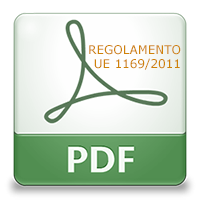Legal obligations
EU REGULATION 1169/2011 on information on food for consumers.
The main objective of EU regulation 1169/2011 relating to information on food for consumers is to guarantee citizens the right to more detailed information on the content of food by introducing a list of substances considered allergenic.
ALLERGENS are ingredients or substances which if ingested can cause allergies and / or intolerances in consumers.
These substances must be declared on the label, if they are present in a food product. From 13 December 2014, food administered and / or sold for takeaway is also subject to the indication of allergens contained therein. The obligation is imposed by EU regulation No. 1169 of 2011 (art. 9: list of mandatory indications – 21: labeling of some substances or products causing allergies or intolerances – 44: national provisions for non-prepacked foods – Annex II: Substances and products that cause allergies), and concerns, in addition to the products administered, all the food offered for sale to the final consumer without pre-packaging or pre-wrapped at the time of sale at the request of the consumer.
From 13 December 2014, the operator is required to inform the consumer of the presence or otherwise of the so-called allergens highlighted in Annex II of EU Reg. 1169/2011 and subsequent amendments. The list of allergens is periodically updated in the light of the most recent scientific knowledge.
Food allergy is an abnormal and immediate reaction of the body, triggered by the immune system, towards a food containing allergens. In more detail, the immune system produces an antibody to a certain food.
Article. 21 of EU Reg. 1169/20011 provides:
The name of the allergen must be highlighted through a type of character distinct from the other listed ingredients, for example by size, style or background color;
The name of the allergen must be repeated whenever it is present in several ingredients and / or technological adjuvants present in the food.
The food safety programs have shown that the presence of undeclared allergens is attributable to the manipulations that are carried out in the course of preparing food for administration and sale, and also the inability by operators to provide correct information to the consumer. .
In order to manage the allergen risk in these phases, food businesses must know in detail the ingredients used for the preparation of food.
For this reason, operators in the food sector must keep all data relating to the raw materials, present on the label affixed to the food packaging or on the documentation provided upon delivery of the goods. Another fundamental point is to establish where to store the information relating to the ingredients so that the staff can have quick access to any data in a simple and fast way to provide complete and exhaustive information to the consumer.
DIFFERENCE BETWEEN ALLERGY AND INTOLERANCE
Food intolerance refers to an abnormal reaction of the body towards a substance without the involvement of the immune system.
When we talk about food allergy instead we mean an immunological reaction towards normally tolerated food proteins called allergens.
HERE IS THE LIST OF 14 FOODS OR PRODUCTS THAT CAUSE ALLERGIES OR INTOLERANCES

- 1) CEREALS containing gluten such as wheat, rye, oat barley, spelled, kamut and their derived strains and derived products
- 2) CRUSTACEANS and crustacean-based products
- 3) EGGS and egg products
- 4) FISH and fish products
- 5) PEANUTS and peanut products
- 6) SOYA and soy products
- 7) MILK and milk-based products (including lactose)
- 8) NUTS such as almonds, hazelnuts, walnuts, pistachios and their products
- 9) CELERY and celery products
- 10) MUSTARD and mustard products
- 11) SESAME SEEDS and sesame seed based products
- 12) SULFUR DIOXIDE AND SULPHITES in concentrations higher than 10 mg / Kg or 10 mg / liter in terms of total sulfur dioxide
- 13) LUPINS and lupine-based products
- 14) MOLLUSCS and shellfish products

